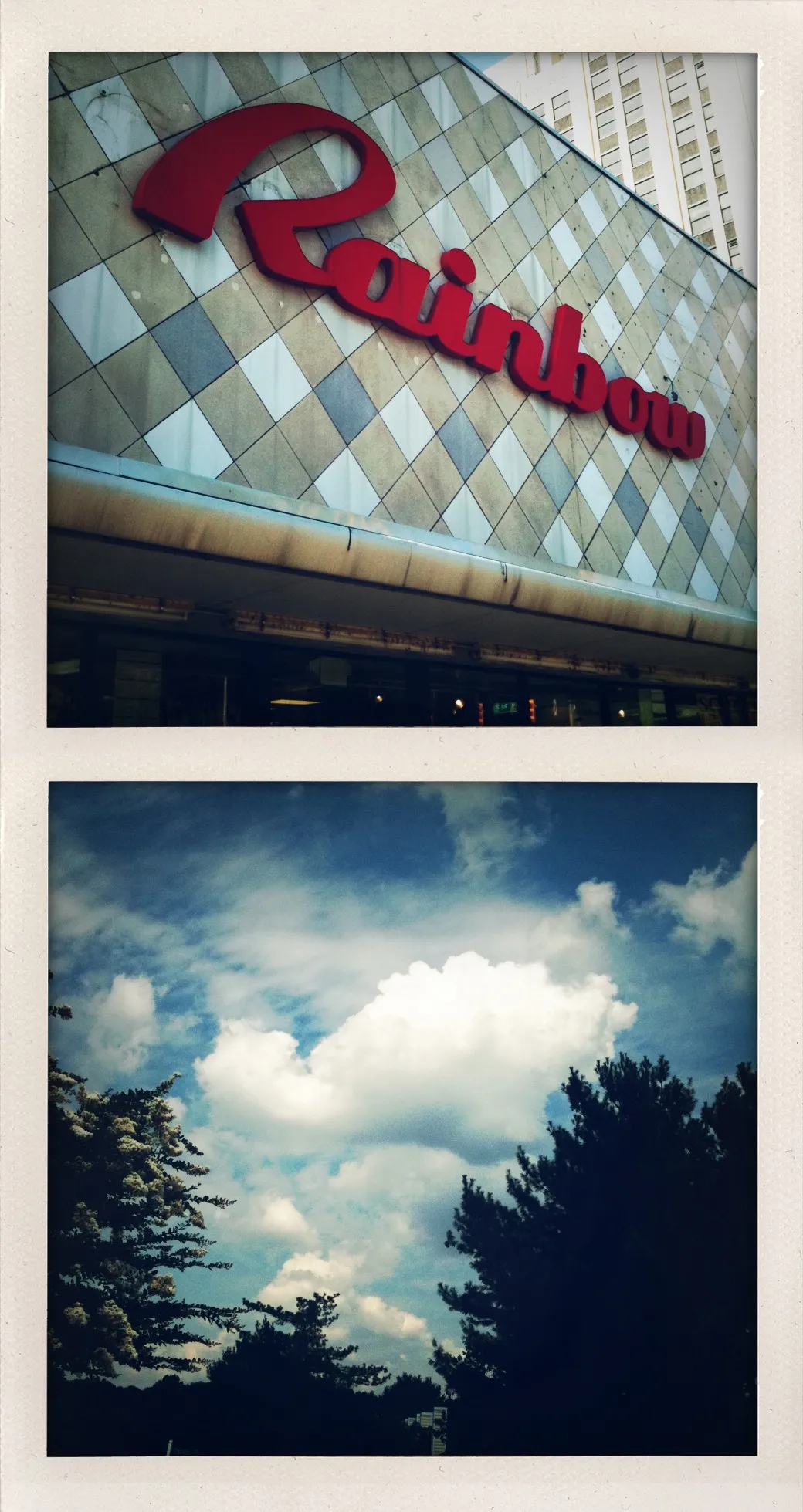Cloud Cover

This diptych inverts expectation by placing a commercial “Rainbow” storefront sign above an actual sky filled with clouds. The sequence presents branding before nature, signifier before phenomenon. The title “Cloud Cover” functions as both meteorological term and conceptual overlay—the sign literally covers the sky while acting as commercial substitute for natural spectacle.
Crucially, no rainbow appears in the lower panel’s clouds and trees. The promise exists only as branded text on weathered architecture, installed in advance of the atmospheric conditions that might produce an actual rainbow. The work examines how commercial signifiers increasingly replace the natural phenomena they reference, positioning manufactured expectations above unmediated experience.
Essay written: November 2025